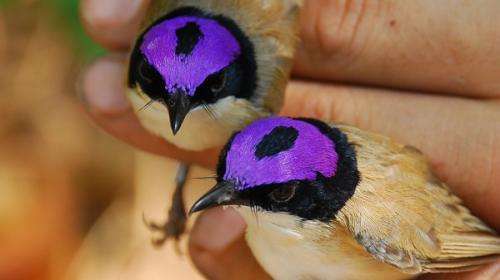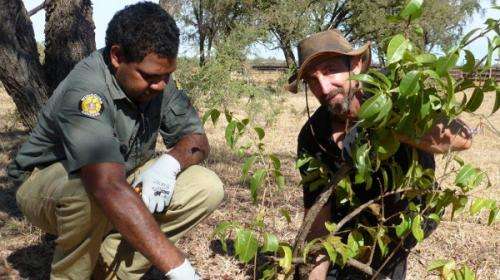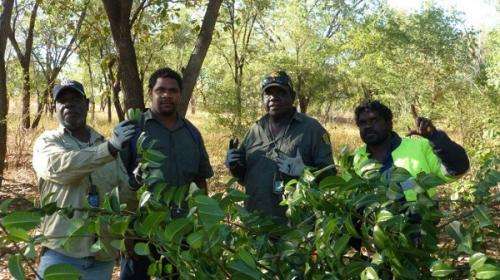Eradication efforts unite to preserve fairy-wren population

Indigenous rangers and the Department of Agriculture and Food have been working with pastoralists to eradicate ornamental rubber vine (Cryptostegia madagascariensis) growing along the river banks at Mount House station in the north-west Kimberley.
The action is being taken to protect the endangered purple-crowned fairy-wren (Malurus coronatus coronatus).
Wunggurr ranger Kevin Dann says the plant, a garden escape, was starting to degrade an important habitat by choking eucalyptus and pandanus trees.
"Along the river bed is a nice shady spot," he says.
"You got trees...it sort of grows really thick...which is a good cover for snakes, kangaroos, birds, all sort of animals we saw walking through underneath it.
Mr Dann says the tree canopy has an effect like an air conditioned room all along the river bed and it provides a haven for animals who use the area to rest.
"Trees which make a good perfect shade for the birds, rubber vines choke it and like there's no tree, hardly the tree is growing 'cos the rubber vine's taking over," he says.
"It chokes that tree, and also destroy places for animals which live in there along the river bank, like that little fairy wren."
Mr Dann says Ngarinjin people know the purple-backed fairy-wren to be a pandanus dweller.
Wildlife ecologist Dr Anja Skroblin, who based her PhD studies partly on wrens at the neighbouring Mornington Station, says M coronatus coronatus is a threatened species with a habitat restricted to riparian areas.

DAFWA invasive species field officer Tracey Vinnicombe, who coordinated the project, says Mt. House Station is within the Wilinggin Indigenous Protection Area.
"The Wunggurr Rangers are learning to control weeds in this area and are currently completing certificates in conservation and land management," she says.
"The rubber vine/purple-crowned fairy-wren habitat protection project allowed for training and assessment in a number of components' towards their certificates: weed identification, mapping, best practice and control as well as training in GPS to collect data."
She says while one of the rangers called up several of the wrens by imitating their call, they did not find any nests.

Rangelands NRM Kimberley Region project manager Kira Andrews says an impressive number of plants were destroyed over the three-day exercise.
They found and destroyed more than 500 plants using the Picloram gel "Vigilent", and collected pods from seeding plants.
Some plants had already released seeds, so a follow-up eradication exercise is planned next season.
Provided by Science Network WA





















